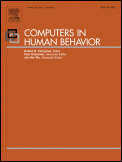
COMPUTERS IN HUMAN BEHAVIOR
Scope & Guideline
Pioneering Research at the Forefront of Technology and Behavior
Introduction
Aims and Scopes
- Human-Computer Interaction (HCI):
Research focused on understanding how individuals interact with computers and the design of user-friendly systems that enhance user experience. - Digital Media and Communication:
Explores the impact of digital communication platforms on social behavior, identity formation, and interpersonal relationships. - Mental Health and Technology:
Investigates the effects of technology use on mental health, including issues such as addiction, anxiety, and the role of social media in shaping psychological well-being. - Educational Technology:
Examines the role of technology in educational settings, including the effectiveness of digital tools and platforms in facilitating learning and engagement. - Cyberpsychology:
Studies the psychological aspects of online behaviors, including cyberbullying, online gaming, and the influence of digital environments on human behavior. - Ethics and Privacy in Technology:
Addresses the ethical implications of technology use, focusing on privacy, data security, and the social responsibilities of tech developers.
Trending and Emerging
- Artificial Intelligence and Machine Learning:
Studies focusing on the implications of AI and machine learning in various domains, including education, healthcare, and consumer behavior, are gaining momentum. - Virtual Reality and Augmented Reality:
Research on the psychological and behavioral effects of immersive technologies is increasing, particularly in relation to education and therapeutic applications. - Social Media Dynamics:
Exploration of the complexities of social media interactions, including the effects of algorithms, misinformation, and community dynamics, is becoming a key area of focus. - Mental Health Interventions:
Emerging research on the use of digital platforms for mental health support, including teletherapy and mobile health applications, highlights the intersection of technology and psychological well-being. - Gamification and Engagement:
The application of gamification in various contexts to enhance user engagement and motivation is a rising trend, particularly in educational and health-related technologies. - Ethical Considerations in Technology:
An increasing emphasis on the ethical implications of technology use, particularly in relation to privacy, surveillance, and the social responsibilities of tech companies, is becoming prominent.
Declining or Waning
- Traditional Media Effects:
Research specifically focused on traditional media (television, radio) effects on behavior is less prevalent, with a shift towards digital platforms. - Basic User Experience Studies:
Studies that merely assess user satisfaction without deeper psychological insights are declining in favor of more complex analyses involving emotional and cognitive factors. - General Cyberbullying Research:
While still important, the volume of general studies on cyberbullying is decreasing as research becomes more focused on specific contexts and populations. - Single-Technology Impact Studies:
Research that examines the impact of a single technology in isolation is waning, with a trend towards more integrative studies that consider multiple technologies and their interactions.
Similar Journals

Cognitive Research-Principles and Implications
Exploring the Frontiers of Cognitive Science.Cognitive Research: Principles and Implications, published by SPRINGER, is a premier open-access journal dedicated to the dynamic field of cognitive neuroscience and experimental psychology. Since its inception in 2016, this journal has rapidly established itself as a leading platform for disseminating innovative research, achieving impressive rankings of Q1 in both Cognitive Neuroscience and Experimental and Cognitive Psychology in 2023. With a Scopus ranking of #16 out of 165 in Experimental and Cognitive Psychology and #28 out of 115 in Cognitive Neuroscience, it serves as a vital resource for researchers and practitioners eager to explore the intricacies of cognitive processes. Operating from its base in the United Kingdom, the journal offers open access to its articles, ensuring that groundbreaking research is widely available and can influence both academic inquiry and real-world applications. As the field continues to evolve, Cognitive Research: Principles and Implications remains an essential reference point for advancing understanding in cognitive science, making it an indispensable tool for students, professionals, and academics alike.
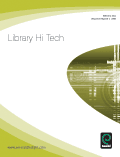
LIBRARY HI TECH
Connecting Scholars with Cutting-Edge ResearchLIBRARY HI TECH is a distinguished peer-reviewed journal published by Emerald Group Publishing Ltd, offering a vital platform for researchers, professionals, and students in the fields of Library and Information Sciences and Information Systems. Since its inception in 1983, this journal has been instrumental in disseminating cutting-edge research and innovative practices, boasting an impressive Q1 ranking in Library and Information Sciences and a Q2 ranking in Information Systems as of 2023. Recognized globally for its robust scholarship, LIBRARY HI TECH holds significant positions in Scopus, ranking #22 out of 280 in Library and Information Sciences, placing it in the top 92nd percentile, and ranking #77 out of 394 in Computer Science — Information Systems, with an admirable 80th percentile. This journal not only enriches the academic dialogue but also contributes to the practical evolution of library technologies and information management, making it an essential resource for those keen on advancing their knowledge in these dynamic fields. With no open access, access is typically gained through institutional subscriptions or direct purchase, ensuring high-quality dissemination of research findings.
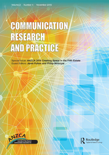
Communication Research and Practice
Elevating Voices in Human-Computer Interaction and BeyondCommunication Research and Practice is a premier academic journal published by Taylor & Francis Ltd, dedicated to the interdisciplinary exploration of communication studies. Since its inception in 2016, the journal has significantly contributed to the field by addressing contemporary issues in Communication, Human-Computer Interaction, and Political Science, among others. With its impressive category rankings, including Q2 in Communication and Q3 across several related fields in the 2023 category quartiles, it has carved a niche as an authoritative voice in social sciences. The journal's robust indexing and rankings, such as being placed in the 72nd percentile for Political Science and International Relations by Scopus, underpin its reputation as a valuable resource for researchers, practitioners, and students alike. While currently not an open-access journal, it offers substantial insights into the evolving landscape of communication strategies and practices, making it essential for those seeking to enhance their understanding and application of effective communication in various contexts.
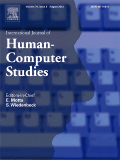
INTERNATIONAL JOURNAL OF HUMAN-COMPUTER STUDIES
Transforming Research into Real-World ImpactINTERNATIONAL JOURNAL OF HUMAN-COMPUTER STUDIES, published by Academic Press Ltd - Elsevier Science Ltd, stands at the forefront of research dedicated to the dynamic interplay between humans and technology. With a remarkable impact factor reflective of its rigorous academic standards and its prestigious ranking in the Q1 category across vital disciplines such as Education, Engineering, Human Factors and Ergonomics, and Human-Computer Interaction, this journal serves as an essential resource for researchers, professionals, and students alike. Spanning from 1994 to 2024, it showcases pioneering studies that contribute significantly to the understanding of cognitive processes, usability, and the evolving role of technology in society. Despite the absence of Open Access options, access to this journal is facilitated through institutional subscriptions, ensuring that critical findings and advancements are readily available to a global audience. By continuing to publish high-quality research, the INTERNATIONAL JOURNAL OF HUMAN-COMPUTER STUDIES plays a crucial role in advancing the field, fostering innovation, and guiding future research directions.

Internet Research
Decoding the Internet's Influence on Society and EconomyInternet Research, published by Emerald Group Publishing Ltd, stands as a pivotal peer-reviewed journal in the domains of communication, economics, and sociology. Established in 1991, it has continually advanced the understanding of how the internet influences human interaction, economic behaviors, and sociopolitical structures. With impressive ranking achievements, including Q1 status in Communication, Economics and Econometrics, and Sociology and Political Science, the journal is recognized for its high impact, evidenced by its outstanding Scopus rankings—28th in Sociology and Political Science and 12th in Communication, highlighting its relevance and quality within the academic community. While the journal is not open access, its selective publication of landmark research attracts a dedicated readership of scholars, professionals, and students eager to explore the multidimensional impacts of the digital age. With a focus on innovative methodologies and empirical findings, Internet Research aims to foster scholarly discourse that shapes our understanding of the evolving online landscape through 2024 and beyond.

Psihologija
Pioneering Open Access to Psychological KnowledgePsihologija is a distinguished academic journal published by the Association of Serbian Psychologists, dedicated to the field of Psychology. With an ISSN of 0048-5705, this journal has been an essential platform for scholarly communication since its inception, transitioning to an Open Access model in 2002 to ensure wider accessibility to its research findings. Recognized in the 2023 Scopus rankings as a Q3 journal in the miscellaneous category of Psychology, it aims to disseminate innovative and impactful research across various psychological disciplines. With a current Scopus rank of #132 out of 216, positioned within the 39th percentile, Psihologija serves as a vital resource for researchers, professionals, and students eager to advance their understanding of psychological science. Its commitment to fostering knowledge and collaboration makes it a crucial publication for anyone looking to explore contemporary issues and developments in psychology.

STUDIA PSYCHOLOGICA
Cultivating a Global Community of Psychological InquirySTUDIA PSYCHOLOGICA is a prominent open-access journal published by the SLOVAK ACADEMY OF SCIENCES, CENTER FOR SOCIAL & PSYCHOLOGICAL SCIENCES, IEP. With an ISSN of 0039-3320 and an E-ISSN of 2585-8815, this journal has been a vital resource for the dissemination of psychological research since its inception, converging from 1996 through to 2024. As a recognized publication in the field of psychology—achieving a Q3 categorization in the 2023 quartiles—STUDIA PSYCHOLOGICA serves as a crucial platform for researchers, professionals, and students seeking to advance their understanding of contemporary psychological issues. The journal's commitment to open access, initiated in 2016, reflects its dedication to making high-quality research accessible to a global audience. Located in the heart of Slovakia at Dubravska Cesta 9, 813 64 Bratislava, STUDIA PSYCHOLOGICA not only publishes groundbreaking studies but also fosters international dialogue, making it an essential scholarly resource in the diverse realm of psychology.
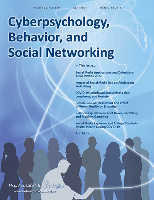
Cyberpsychology Behavior and Social Networking
Advancing Insights into Online InteractionsCyberpsychology Behavior and Social Networking is a leading international journal dedicated to the exploration of the intricate relationship between psychology and digital interactions. Published by Mary Ann Liebert, Inc, this esteemed journal boasts a strong impact factor, reflecting its significance in the fields of psychology, communication, and computer science. With a broad scope encompassing topics such as social networking, online behavior, and human-computer interaction, the journal aims to provide a vital platform for researchers, professionals, and students to share innovative research and insights. Recognized as a Q1 journal across multiple categories, including Applied Psychology and Human-Computer Interaction, it ranks impressively among its peers, underscoring its influence in advancing academic discourse. Additionally, the journal offers open access options, enhancing the visibility and accessibility of published work to a diverse audience. As digital technologies continue to evolve, Cyberpsychology Behavior and Social Networking remains at the forefront, fostering scholarly dialogue that navigates the psychological ramifications of our increasingly interconnected digital lives.
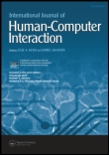
INTERNATIONAL JOURNAL OF HUMAN-COMPUTER INTERACTION
Shaping Tomorrow's Interactions TodayINTERNATIONAL JOURNAL OF HUMAN-COMPUTER INTERACTION, published by Taylor & Francis Inc, stands at the forefront of research within the interdisciplinary fields of human-computer interaction, human factors, and ergonomics. Since its establishment, the journal has consistently contributed to advancing the understanding of the interactions between people and computers, making it a vital resource for researchers, professionals, and students alike. With an impressive impact factor reflecting its high citation rate, this journal is recognized as a Q1 publication in both Computer Science Applications and Human Factors and Ergonomics categories for 2023, showcasing its stature within the academic community. Additionally, it boasts a commendable ranking within the top percentiles in key areas on Scopus, ensuring that the research published here reaches broad scholarly audiences. Available in traditional subscription format, the journal covers seminal studies from 1989 to 2024, reflecting ongoing innovation in technology and its applications in everyday life, and thus serves as an essential platform for pioneering research that shapes the future of user experience.

Review of Communication Research
Fostering Open Dialogue in a Connected WorldReview of Communication Research is a prestigious open-access journal dedicated to advancing the field of communication studies. Published by REVIEW COMMUNICATION RESEARCH from its base in Madrid, Spain, this journal has established itself as a vital platform for scholarly discourse since its inception. With an impressive impact factor and ranked in the Q1 quartile of communication journals for 2023, it holds a commendable position, placing it within the top 13% of approximately 511 journals in the communication category on Scopus. Since becoming open-access in 2013, the journal has enabled researchers, professionals, and students to access high-quality research without financial barriers, thereby fostering a greater dissemination of knowledge and dialogue within the community. Covering a wide array of topics from communication theory to media studies, the Review of Communication Research continues to contribute significantly to the understanding and evolution of communication in today’s interconnected world. Researchers are encouraged to engage with and submit their findings to this influential journal to further enrich the scholarly landscape.